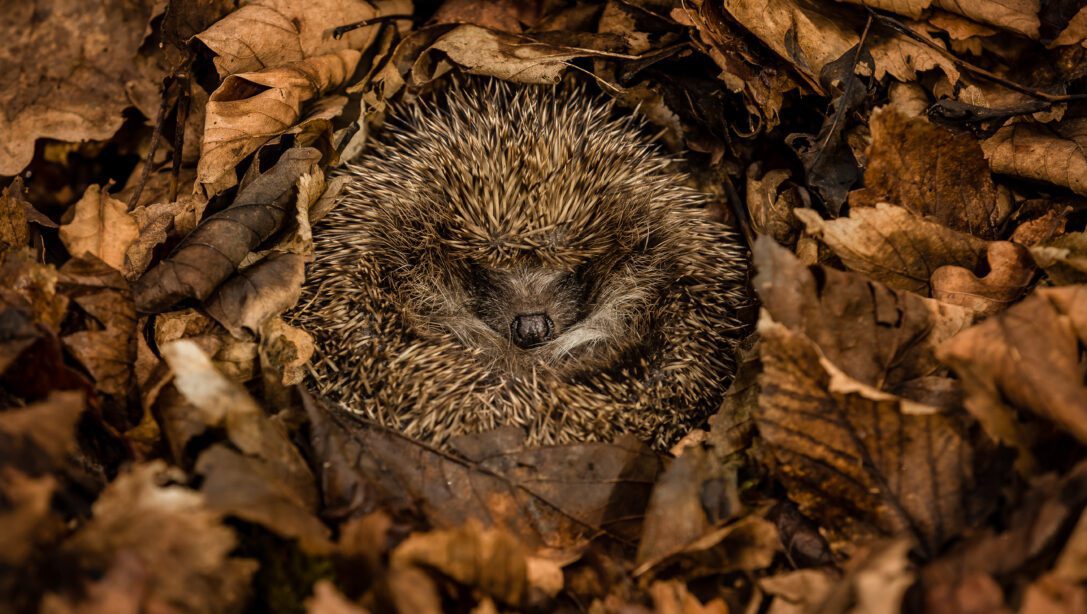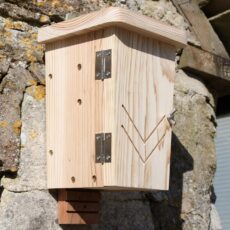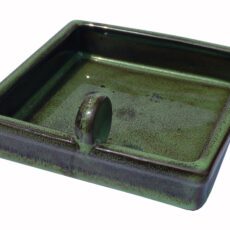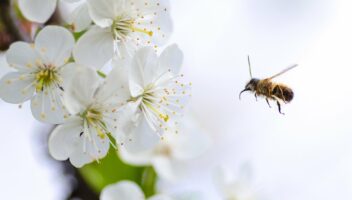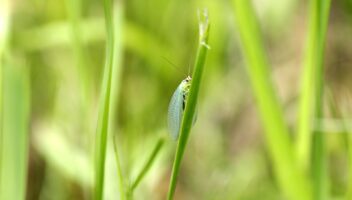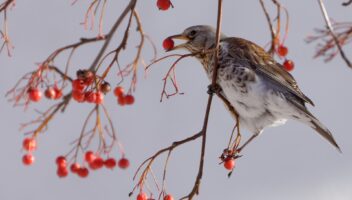When we think of animals during winter, the image that comes to mind is probably hibernating animals. A cosy hedgehog family curled up in a burrow or bears in a cave peacefully slumbering all the way through until the soft warmth of spring encourages them to emerge.
There are a number of ways our UK species protect themselves during winter. A number of flying animals migrate, finding a warmer home for the winter. Some species do hibernate and some enter more of a temporary torpor in short periods of slowing down throughout the colder months.
We look at the autumn/winter habits of some of our best loved UK wildlife and what we can do in our own gardens to support them.
Bees
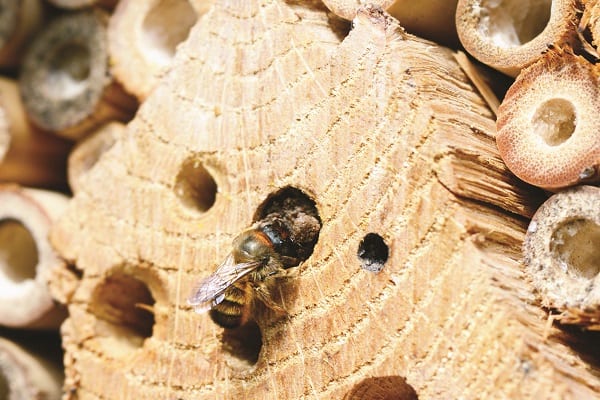
Honeybees
Honeybees are unique as they are the only bee species to keep the entire colony over winter, huddling together with the queen at the centre for survival. The colony’s store of honey is their source of survival and on warmer winter days, they will make brief trips out to seek fresh sources of nectar.
Bumblebees
With bumblebees, only the queen bee survives the winter. Worker bees, males and old queen bees simply die before the cold sets in. Queen bumblebees who will have mated in summer or autumn will hibernate by creating a burrow in the earth or under piles of logs. In warmer parts of the country, they sometimes create new nests instead of hibernating so for this reason, it is entirely possible to spot a bumblebee during the winter months.
Solitary Bees
For the many species of solitary bee the adults die before winter. Ahead of this the eggs are usually left carefully in a nest (depending on the species). In some cases it will be during winter that they grow from eggs into adult bees. These adults wait in a state of torpor until the spring.
Winter Plants
The best way to support bees during the winter months is to have plants in your garden that are a source of winter nectar; Mahonia, Erica carnea (winter heather), Hedera helix (common ivy), Hellebores and Lonicera fragrantissima (winter honeysuckle), for example.
If you have a bee or bug house, ensure it is positioned in a sheltered spot where frosts are unlikely to be a problem. Be very wary if you are doing any house renovations at this time, in case you disturb a winter nest.
How you can help:
- Create leaf and log piles for bees to shelter in. Avoid disturbing these spots throughout winter.
- Have plants in your garden that offer winter nectar – e.g. Mahonia, Hellebores and Lonicera fragrantissima.
- Locate any bee or bug houses to a sheltered, frost-free spot.
Birds
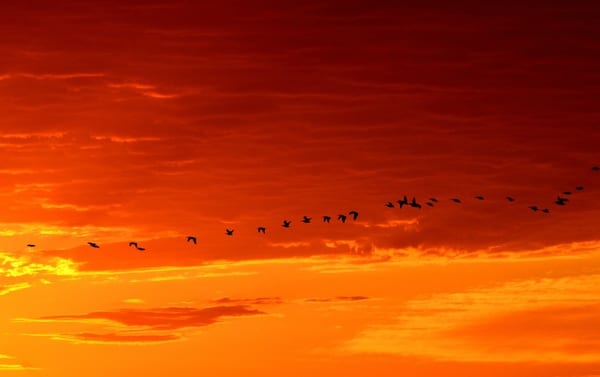
One of the iconic sights of the autumn is large gatherings of birds preparing to migrate to sunnier climates ahead of winter.
Only a small number of species migrate every year; swallows, nightingales and swifts being some prime examples. Migration is fraught with danger and starvation which is a real issue. It is always important to support birds from the beginning of autumn with extra food with a high fat content for this reason.
Many of our UK species stay resident all year round including chaffinches, goldfinches and the beloved robin. Some birds actually journey to the UK in winter, as our climate is more hospitable, like blackbirds from Scandinavia and starlings from Eastern Europe.
It is during the cold winter months, when frost and snow may be on the ground that it is hardest for birds to find natural food sources. Put out bird food with high fat content, like suet fat snax, along with fresh water daily, as it freezes over easily in winter. You could also put up a nest box for added winter shelter.
How you can help:
- Provide bird food with high fat content in autumn, like suet fat snax, to support migrating birds.
- Continue to offer bird food with high fat content throughout winter to give extra energy to remaining birds, along with fresh water daily.
- Put up a nest box for added winter shelter.
Butterflies
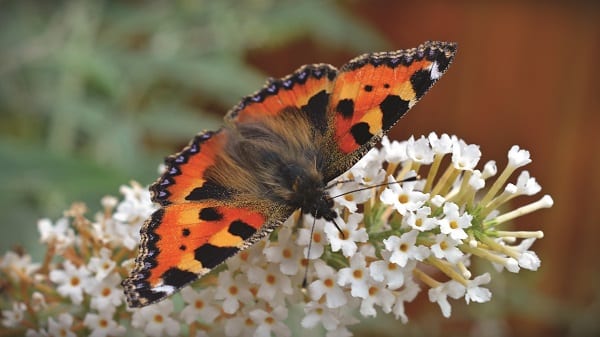
Winter is a challenging season for most species of butterfly (and moth), as they find it hard to keep warm. As a result, most butterfly species have evolved to overwinter as a larva or pupa which is not strictly hibernation, but a form of dormancy.
A very small number of UK butterfly species will overwinter as adult butterflies, including the Comma, Small Tortoiseshell, Red Admiral and Peacock. Both Small Tortoiseshell and Peacock butterflies may choose a spot inside a building for their winter dormancy. The problem can be when that building is our homes and we turn up the heating to make ourselves toasty inside. This confuses the butterflies into thinking the warmth of spring has arrived – at which point, they are (to our surprise) found flying inside our houses. If this happens, it is best to catch them, keep them in a box for a short while, then gently remove to a cool and sheltered part of your house such as a shed or garage – so long as it has a spring escape route for them.
How you can help:
- Grow ivy or have potential hollows for butterflies to overwinter in.
- Be on the lookout for Small Tortoiseshell or Peacock butterflies disturbed in your home and move them to somewhere quieter and cooler if needed.
Frogs & Toads
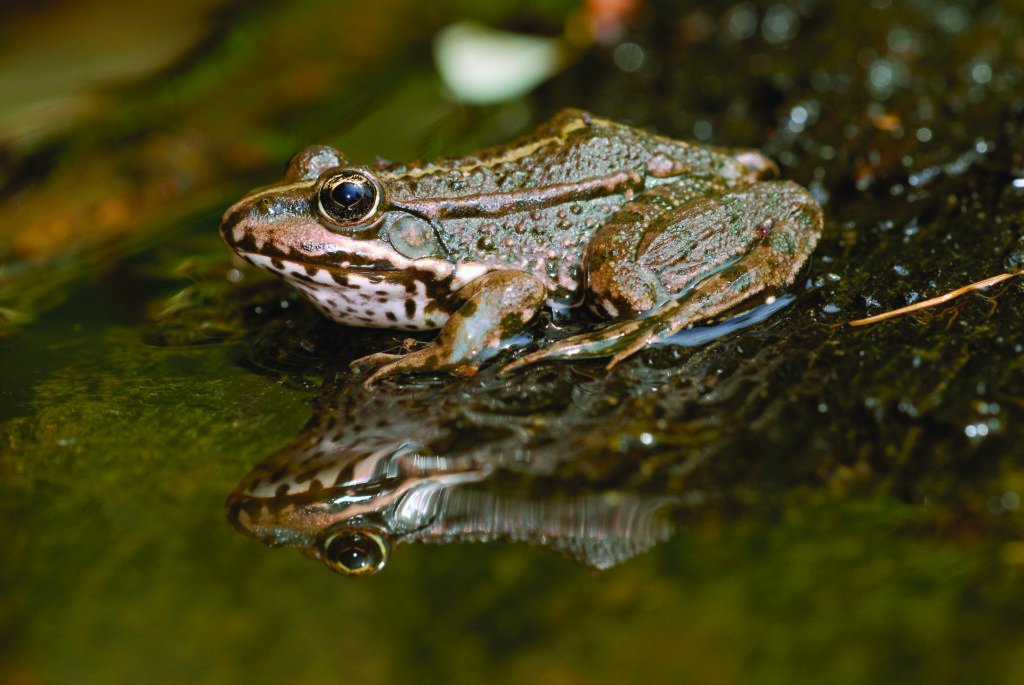
Being cold blooded amphibians such as frogs and toads, must slow down their body and hibernate during the cold winter months if they want to survive.
Frogs sometimes hibernate in the mud at the bottom of ponds, breathing through their skin. Be wary in very cold spells if you see one swimming under the ice; it may mean oxygen levels are getting too low for their survival. If this is the case gently break some of the ice to allow more oxygen to reach through.
Many frogs and toads spend their hibernation on land, getting underground if they can. One way to support them in your garden is with a frog/toad home. You can find these at Hillier Garden Centres; palaces for your amphibian friends to survive the winter in.
How you can help:
- If you have a pond, inspect regularly through winter to ensure no frogs are swimming below the ice; if so, break a hole in the ice to increase oxygen levels.
- Consider purchasing a special frog/toad home for them to hibernate in.
Hedgehogs
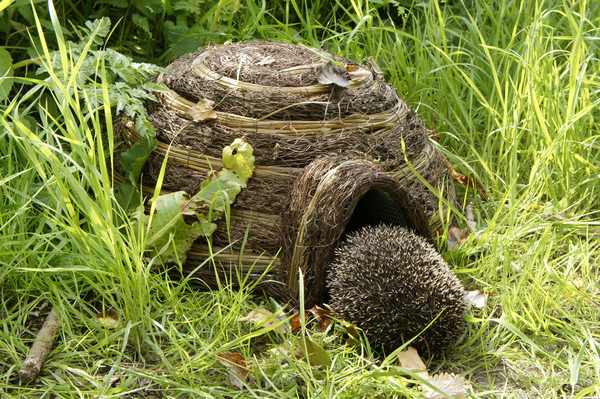
The only mammals in the UK that are known for hibernating are hedgehogs, dormice, and bats.
During hibernation animals drop their heart rate and metabolism, lower their body temperatures, and slow their breathing. This allows them to conserve energy for as long as possible, drastically reducing their need for food. Even so, hibernating animals will occasionally get up and roam or go to the toilet; they are not entirely immobile or comatosed.
Support for hedgehog hibernation should begin in the autumn at the same time as you begin to tidy your garden. In the autumn months these hogs try to eat as much as they can, building up their fat reserves so they can hibernate for as much of the winter as possible. This is the time to put out a ready supply of hedgehog food and water.
Any time from October onwards (in milder years it may be as late as December), hedgehogs will find a quiet spot for hibernating. It is important to leave hibernating hedgehogs in peace, so try not to do any late tidying of potential hibernation spots. Given that hibernating hedgehogs are sometimes on the move, continue to leave food out for them, even through the winter months.
How you can help:
- Leave a rough patch in your garden with piles of leaves and logs from October onwards where hedgehogs can hibernate (or purchase a dedicated hedgehog house).
- Avoid late autumn/winter tidying of any potential hibernation spots so not to disturb hedgehogs.
- Leave a ready supply of hedgehog food in the autumn to help build fat reserves. Continue to offer some food through the winter months, when they are occasionally on the move.
*Unlike similar houses on the market the Wildlife World Igloo Hedgehog House does not have a wire mesh interior, it instead has a heavy steel frame and a smooth waterproof membrane. The product has been sold for numerous years and has received many positive reviews
Ladybirds
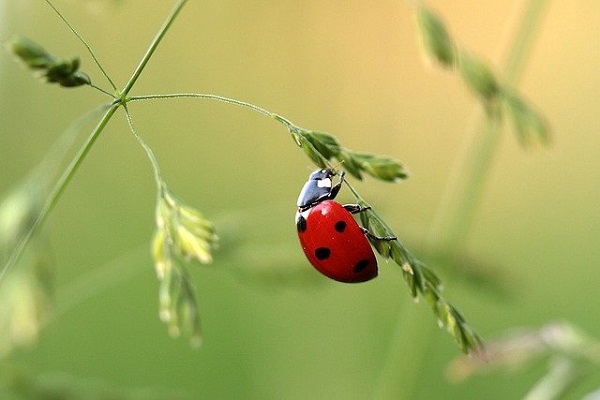
Adult ladybirds typically hibernate in groups through the winter, finding sheltered spots, for example under tree bark. They emerge when the weather warms in spring in search of food and a mate.
Support ladybirds in the same way as many hibernating animal species, by holding back on some of the instincts to tidy the garden and leaving some rough areas for hibernation.
How you can help:
- Leave a rough patch in your garden with piles of leaves and logs from October onwards for ladybirds to hibernate in.
- Avoid late tidying of any potential hibernation spots so hibernating ladybirds are not disturbed.
Squirrels
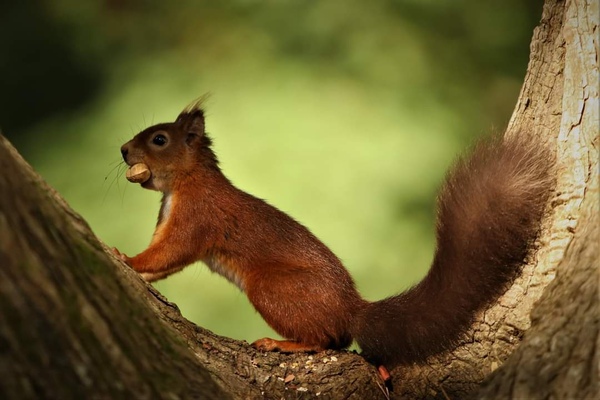
Despite the image of squirrels storing nuts for winter, both of the squirrel species found in the UK (grey squirrels and, much less commonly red squirrels) actually do not hibernate as they cannot retain enough body fat to survive the winter season.
During the colder months, squirrels do make extra efforts to make their dreys particularly cosy and spend extra time in them which explains why they are seen so much less frequently in our gardens in winter. They will make short trips out to the varying sites where they have carefully been storing food away during the warmer months, using this as their winter food source. In the unlikely event that their food stashes (‘caches’) run out, they would look for available food sources including insects and birds eggs.
How you can help:
- Support squirrels as they cache food in autumn by leaving out a supply of nuts, such as walnuts, hazelnuts and almonds.
Find a range of quality animal food and shelters to support hibernation in the wildlife sections of all Hillier Garden Centres.


